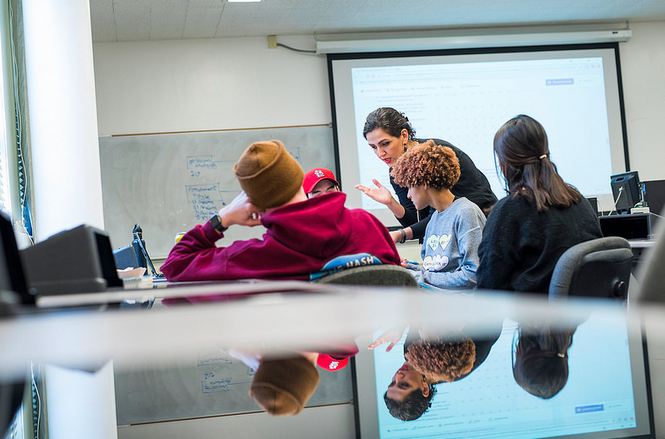Teaching/Instructional Resources
Inclusive Teaching/Classroom |
Classroom Management |
Discussion Strategies |
Large Classroom Strategies |
Inclusive Teaching/Classroom
Creating an inclusive classroom includes consideration of design, pedagogy, language, tone, resources, activities, and our own biases that play out within the learning environment. Inclusive teaching acknowledges the diverse experiences, backgrounds, identities, knowledge, and learning preferences and abilities creating an environment where all students can thrive.  Classrooms are not culturally neutral. Students bring their sociocultural identities and tools with them, as do eductors. Therefore, it is important that choices in pedagogy and design reflect an understanding of culture that paves the way toward students' sense of belogning in their learning communities.
Classrooms are not culturally neutral. Students bring their sociocultural identities and tools with them, as do eductors. Therefore, it is important that choices in pedagogy and design reflect an understanding of culture that paves the way toward students' sense of belogning in their learning communities.
Ambrose, S. A., Bridges, M.W., DiPietro, M. & Lovett, M.C. (2010). How learning works: Seven research-based principles for smart teaching. San Francisco, CA: Jossey Bass.
- Cal Poly Humboldt Inclusive Teaching Guide
- Inclusive Teaching Strategies: Reflecting On Your Practice
- Inclusive Teaching Teaching Tip
- Five Ways to Promote a More Inclusive Classroom
- Inclusive Course Design Resources
- More Equity and Inclusion Resources from ODEI
- Multicultural Education Strategies
- The Effect of Peer Tutoring in Reducing Achievement Gaps: A Success Story [pdf]
Classroom Management
The idea of "classroom management" includes a variety of expectations and routines that are guided by your individual teaching philosophy (approach to teaching). One of the most important things you can do to create a respectful, welcoming learning environment is to begin the first day with two key elements: a learner-centered syllabus and shared classroom guidelines. The learner-centered syllabus sets the tone for learning and provides clear expectations. Consider coming to class on the first day with a ‘starter list’ of guidelines and then open a discussion with students. This co-constructive process provides a sense of ownership and accountability that will shape the learning space into a respectful place for everyone. Revisiting/revising these shared guidelines throughout the semester is a reminder of this inclusive space.
- Learner-Centered Syllabus and Additional Syllabus Resources
- Sample Classroom Guidelines/Ground Rules
- First Day of Class
- Effective Classroom Management Tips
- Academic Integrity
- The Six Pillars of Inclusive Excellence
- Sensitive Topics in the Classroom
- Humboldt Dean of Students Website
Large Classroom Resources
Large Classroom Engagement and Strategies